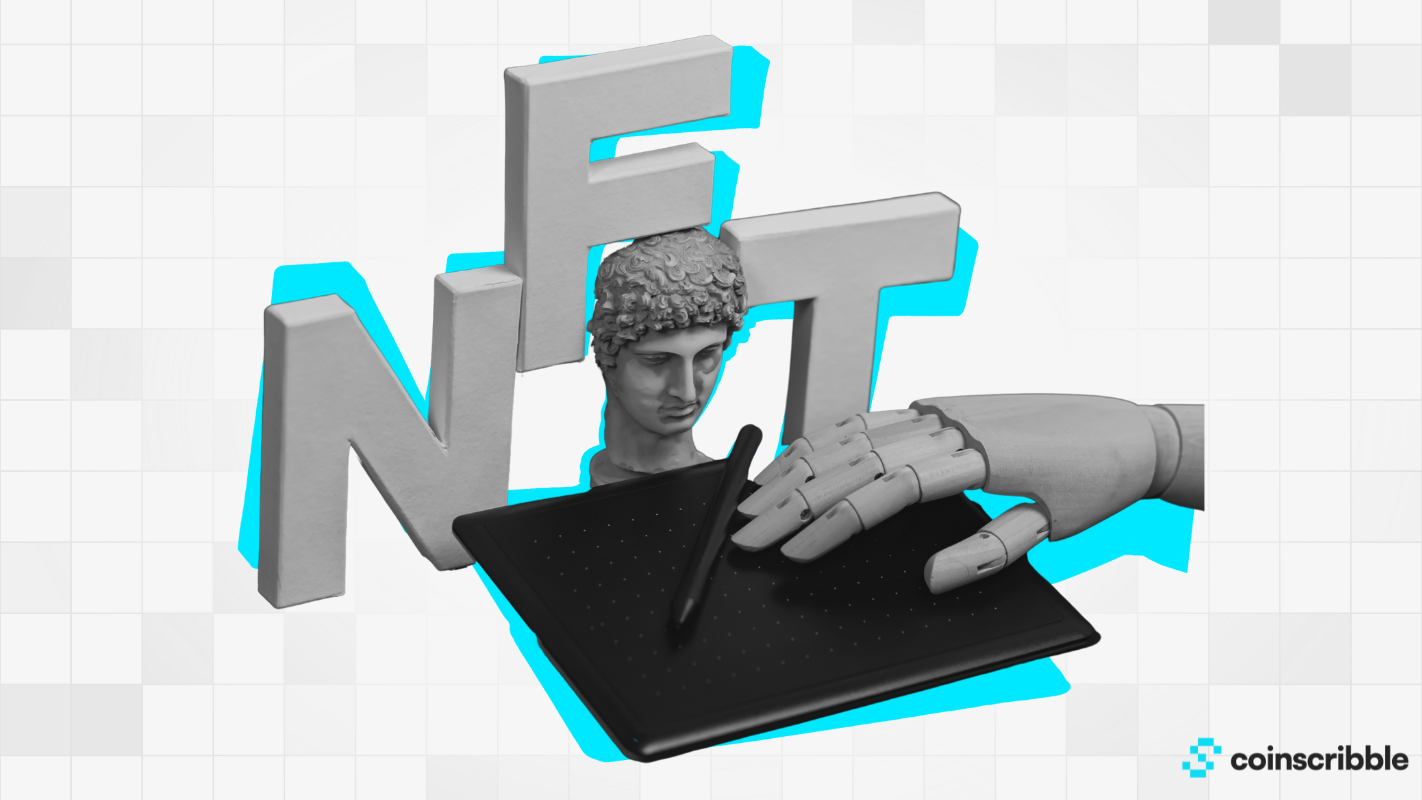In Web3, public relations (PR) needs to be more than just an afterthought. For crypto projects, PR is a fundamental pillar that shapes perception, drives community engagement, and secures critical investor trust. Whether you’re launching a new token, announcing a partnership, or expanding into new markets, the way your story is told can significantly impact your success.
However, crypto PR is not simply a clone of traditional public relations. The blockchain space has its own culture, pace, and expectations. Skepticism is high. Attention spans are short. News cycles move at breakneck speed. What works for a tech startup or e-commerce brand often falls flat in Web3, where authenticity, transparency, and timing matter just as much as your actual product.
Unfortunately, many projects still approach PR with outdated or incomplete strategies. They blast poorly written press releases to generic media lists, overpromise in their announcements, or fail to tailor their messaging to the Web3 audience. The result? Wasted budgets, minimal media pickup, and a loss of credibility in an already cautious market.
This guide will walk you through the crypto-specific best practices that can help your project gain meaningful media traction, foster real trust with your community, and build a long-lasting brand presence in the blockchain space.
1. Define Your Narrative and Messaging
In a space as saturated and fast-moving as crypto, having a strong narrative is not optional — it is essential. Without a clear and compelling story, even the most innovative projects struggle to break through the noise. Narrative is what connects your project to your audience emotionally and intellectually. It frames how the community, investors, and media perceive you.
Why Narrative Matters More Than Features
Many crypto teams fall into the trap of thinking that their technology or tokenomics alone will sell the project. They launch press releases packed with technical jargon, complex charts, and promises of “revolutionizing the industry.” The reality is that features do not create emotional buy-in — stories do.
A strong narrative answers questions like:
- Why does this project exist?
- What larger movement or problem is it tied to?
- How does it fit into the future of blockchain and decentralization?
Your audience is not just buying your product. They’re buying into your vision.
Aligning Your Story With Your Mission and Market Timing
Your narrative should be tightly aligned with both your core mission and the current state of the market. For example, if your DeFi platform is focused on stablecoin lending, emphasizing financial freedom and protecting assets against inflation could resonate more during periods of economic uncertainty.
Market context matters:
- In a bull market, narratives about growth, innovation, and wealth creation resonate.
- In a bear market, narratives about resilience, security, and trust gain traction.
Adapt your messaging to the emotional state of your target audience without losing the essence of your mission.
Example: DeFi Project Telling a Story About “Banking the Unbanked”
Instead of simply stating, “We are a decentralized lending protocol,” consider a narrative like:
“Billions of people worldwide lack access to fair financial services. Our platform brings decentralized lending to underserved communities, empowering individuals to save, invest, and build wealth without reliance on traditional banks.”
This story ties into a broader social mission, creating a deeper emotional connection while highlighting the project’s value.
Pro Tip: Create a Messaging Matrix
To stay consistent across PR releases, interviews, and social media, build a simple messaging matrix:
- Core mission statement
- Elevator pitch (1-2 sentences)
- Key benefits for each audience (investors, users, media)
- Top 3-5 proof points (partnerships, audits, team expertise)
This matrix ensures that your communication remains clear and strategic, no matter who is telling your story.
2. Understand Your Target Audiences
One of the most common mistakes crypto projects make is treating their audience as a monolith. In reality, the blockchain ecosystem is made up of diverse groups — each with their own priorities, pain points, and preferred communication styles.
Understanding who you are talking to is critical for crafting messaging that actually resonates and earns trust.
Different Audiences in the Crypto Space
Here are some of the core groups you’ll likely be speaking to with your PR efforts:
- Retail Investors: Everyday traders and holders looking for the next big opportunity. They value transparency, upside potential, and community strength.
- Crypto Media and Journalists: Writers and editors at publications like Cointelegraph, Decrypt, and Bitcoinist. They look for truly newsworthy angles and credible sources.
- Developers and Builders: Technical talent who might integrate, fork, or build on your platform. They appreciate open-source ethos, strong documentation, and real innovation.
- Venture Capitalists and Institutional Investors: Professional investors seeking viable projects with strong teams, defensible technology, and clear roadmaps.
- Community Members and Evangelists: Loyal users, DAO contributors, and brand advocates who amplify your message organically across social channels.
Each group cares about different elements of your project. Crafting a single, one-size-fits-all announcement risks appealing to none of them.
How to Segment Messaging for Each Group
To maximize the impact of your PR, segment your messaging by audience type:
| Audience | What They Care About | How to Communicate |
|---|---|---|
| Retail Investors | Market opportunity, token utility, roadmap | Simple language, focus on benefits, updates via social channels |
| Journalists | Newsworthiness, credibility, access to sources | Professional press releases, exclusive interviews, clear fact sheets |
| Developers | Technology stack, integrations, openness | Technical documentation links, GitHub activity, hackathon participation |
| VCs | Team strength, scalability, revenue models | Investor decks, private briefings, milestone-driven announcements |
| Community | Vision, access to updates, ability to contribute | Frequent Discord/Twitter updates, community AMAs, token incentives |
Tailoring your story to match each audience’s needs ensures higher engagement and stronger relationships.
Audience Empathy: Speaking the Language of Web3 Natives
Crypto natives are particularly sensitive to authenticity. If your messaging sounds too corporate, overly polished, or disconnected from the Web3 ethos (like decentralization, transparency, community ownership), you risk alienating them.
Key tips for communicating effectively with Web3 audiences:
- Use inclusive language: “We” and “our community” resonate more than “the company” or “the platform.”
- Avoid empty hype: “Groundbreaking” and “revolutionary” are overused. Focus on real milestones and user empowerment.
- Show, don’t tell: Link to your code, your partnerships, your audits. Let proof points do the talking.
At its core, good crypto PR feels like a conversation among peers, not a top-down broadcast from a corporation.
Real-World Example: Chainlink’s Segmented Messaging Strategy
Chainlink (LINK) is one of the best examples of a crypto project that effectively segments its messaging for different audiences — and it shows in their consistent growth and adoption.
Here’s how Chainlink tailors its communications:
| Audience | How Chainlink Communicates |
|---|---|
| Developers | Detailed technical documentation, frequent GitHub updates, hackathon sponsorships, and guides on integrating Chainlink oracles into smart contracts. |
| Enterprise Clients | Case studies with brands like SWIFT and Google Cloud, emphasizing real-world use cases of Chainlink’s oracle technology for data security and reliability. |
| Retail Investors | Blog posts, social media threads, and community AMAs highlighting the growing number of integrations and partnerships, reinforcing the project’s momentum and long-term value. |
| Crypto Media | Clear, newsworthy announcements about partnerships, product launches, and ecosystem milestones. Press releases often come with direct quotes from executives and accessible explanations of why the news matters. |
| General Web3 Community | Consistent engagement through Twitter Spaces, Discord AMAs, and conference panels where the Chainlink team discusses broader trends in decentralization and data infrastructure. |
Key Takeaway:
Chainlink understands that developers want technical depth, enterprises need credibility and case studies, and investors crave traction updates and vision.
By customizing their narrative based on audience needs, Chainlink ensures that each group finds a reason to trust and engage with the project.
3. Craft a Newsworthy Press Release
A well-written press release remains one of the most effective tools in crypto PR. However, in a landscape overflowing with project launches, token listings, and NFT drops, not every announcement is actually newsworthy. To stand out, your release must offer real value to journalists, readers, and the broader community.
Here’s how to craft a press release that captures attention and drives results.
Anatomy of a Great Crypto Press Release
A strong crypto press release should have:
- Compelling Headline: Your headline should immediately convey the most exciting part of the announcement. Avoid generic statements like “XYZ Project Announces New Platform.” Instead, focus on impact: “XYZ Launches First Cross-Chain DeFi Protocol Bridging Ethereum and Solana.”
- Concise Lead Paragraph: The first paragraph should answer the “5 Ws” — who, what, when, where, and why — as clearly as possible. Assume readers might only scan this section.
- Supporting Details: Follow with key features, partnerships, use cases, or technical innovations, without overwhelming with jargon.
- Credible Quotes: Include quotes from leadership (CEO, CTO, Head of Product) to humanize the news and provide journalistic material for easy pull-quotes.
- Links and Media Assets: Always attach your logo, a clean product image, and relevant links (whitepapers, app links, social channels).
Pro Tip: Keep your release under 600 words unless you’re issuing a major, multi-faceted announcement. Editors and writers appreciate brevity.
How to Avoid Jargon and Keep It Accessible
Blockchain and crypto technology are complex — but your press release should not be.
Aim to communicate like you’re explaining your project to an intelligent non-technical friend.
Tips for keeping it accessible:
- Use analogies when possible (“Chainlink is like a data bridge between blockchains and real-world information.”)
- Avoid overloading with acronyms or deep technical references unless absolutely necessary.
- Focus on what the innovation enables rather than just what it is.
If journalists or readers struggle to quickly grasp your news, they will simply move on to the next announcement.
Examples of Strong Crypto Headlines and First Paragraphs
Good Headline:
“Polygon Launches zkEVM Mainnet Beta, Enabling Scalable and Secure Ethereum-Compatible Apps”
Good First Paragraph:
“Polygon, a leading blockchain scaling solution, has officially launched its zkEVM Mainnet Beta, allowing developers to build and deploy Ethereum-compatible decentralized applications with higher security and lower transaction costs. This breakthrough moves Polygon closer to its vision of mass blockchain adoption.”
Notice how it quickly sets the scene, explains the benefit, and hints at the broader mission — all within a few sentences.
Writing Credible, Quotable Statements
Your leadership quotes shouldn’t sound like marketing copy. They should provide insights, enthusiasm, or reflections.
Weak Quote Example:
“We are thrilled to announce this major milestone and look forward to continued success.”
Strong Quote Example:
“Launching our zkEVM Mainnet Beta brings Ethereum developers one step closer to true scalability without compromise. We believe this will open the door for entirely new classes of decentralized applications that were previously impossible.”
The strong quote feels personal, specific, and future-facing — much more likely to get picked up by journalists.
Quick Sidebar Example: Real-World PR Done Right
When Uniswap announced Uniswap V3, their press release didn’t just highlight new features like concentrated liquidity.
They tied it to a larger theme — “capital efficiency for DeFi”.
This messaging helped journalists frame the story not just as a “product upgrade” but as a major evolutionary step for the entire decentralized finance ecosystem.
Key Takeaway: Always connect your announcement to a broader narrative about innovation, growth, or empowerment.





